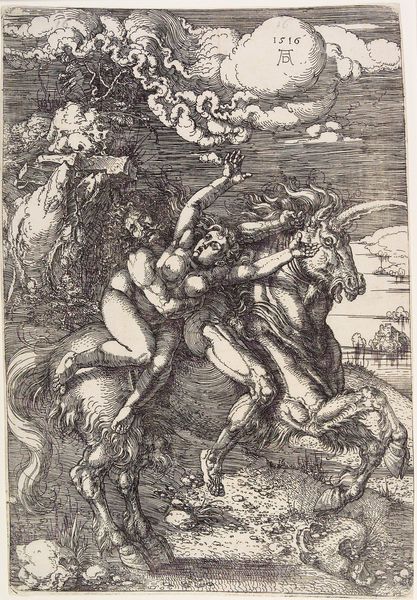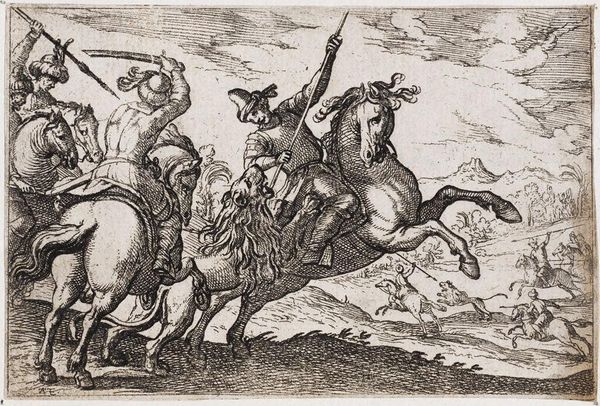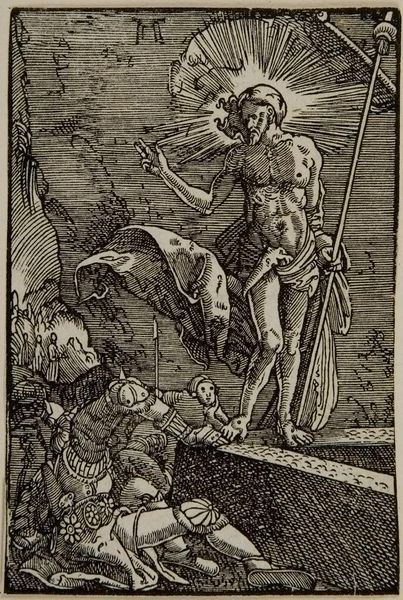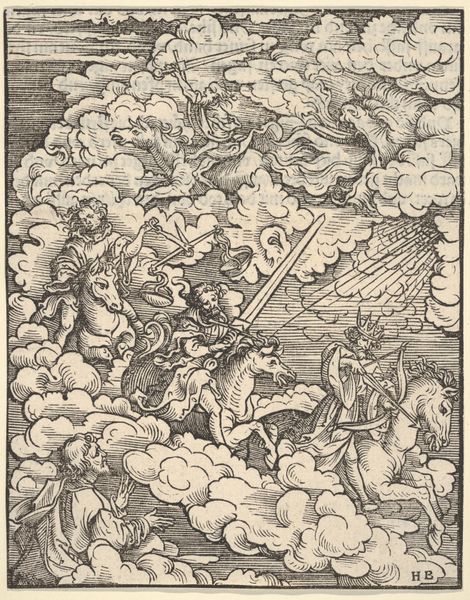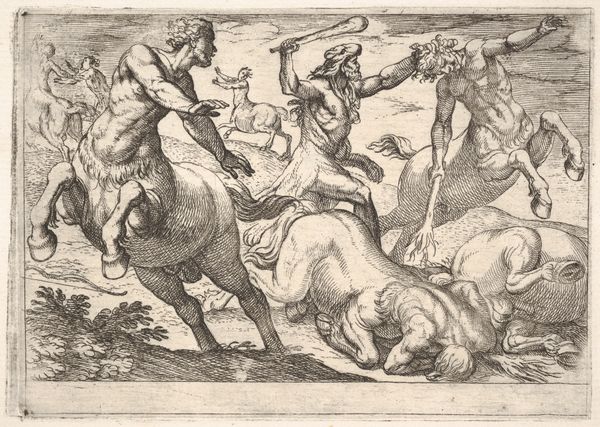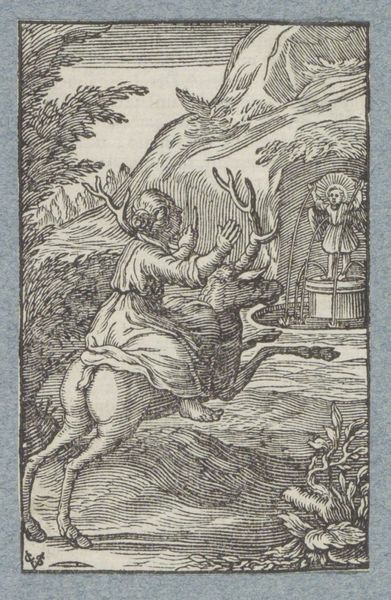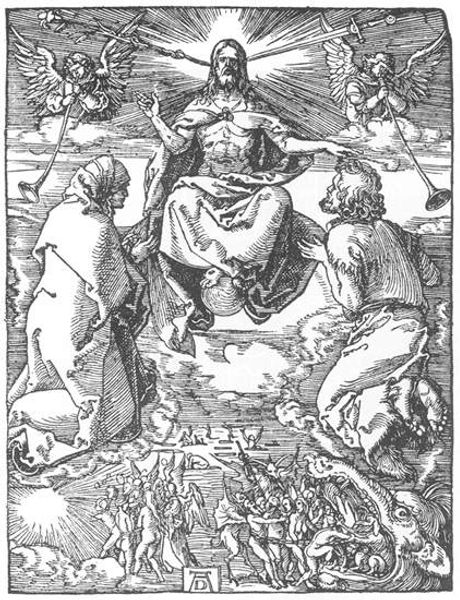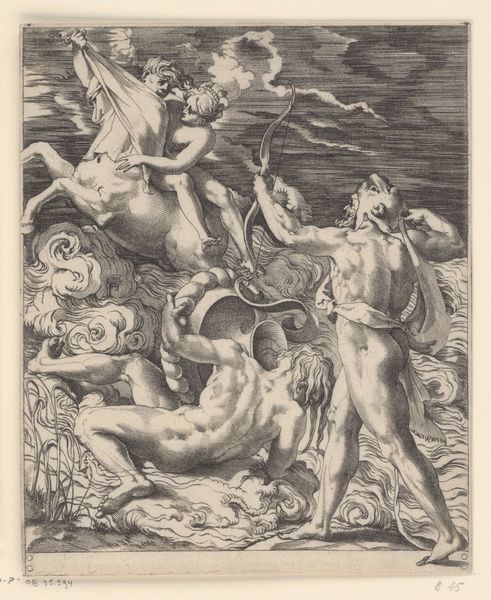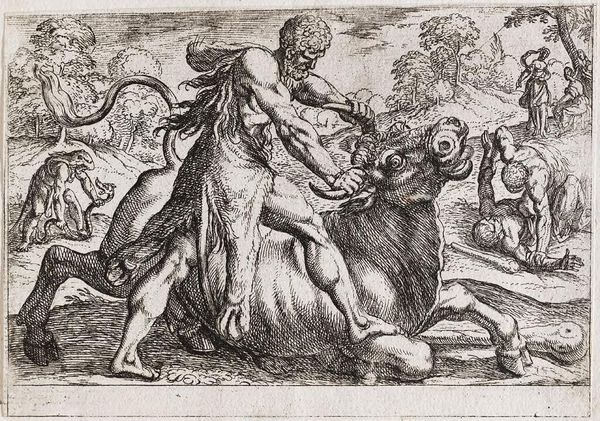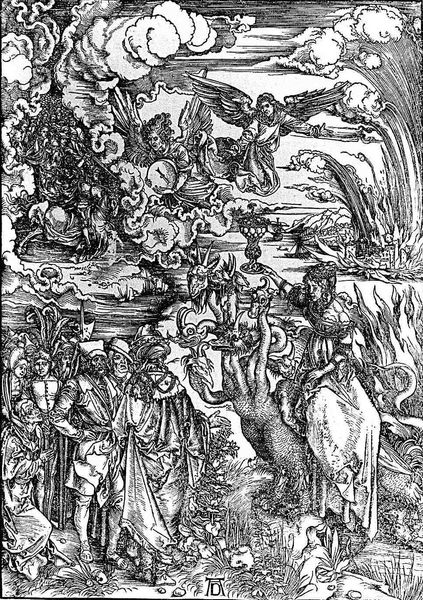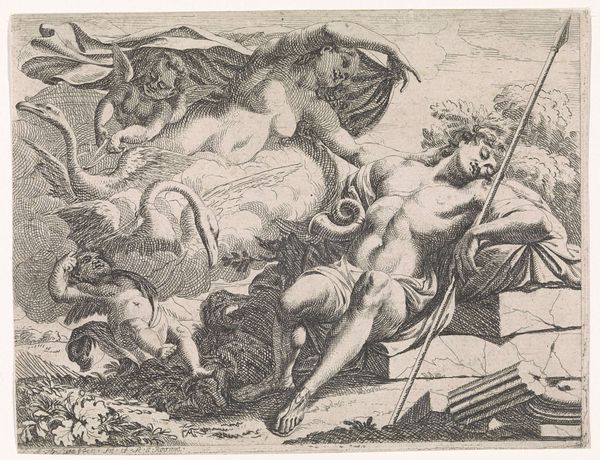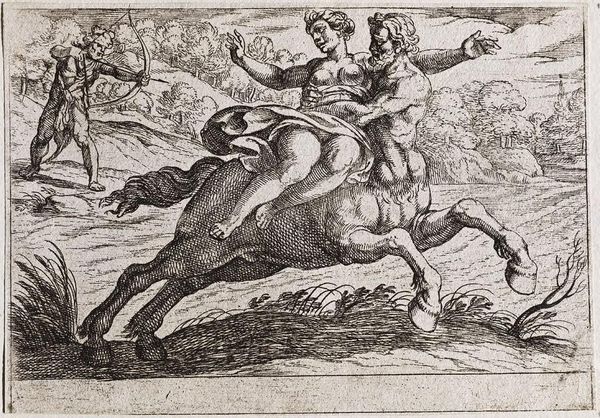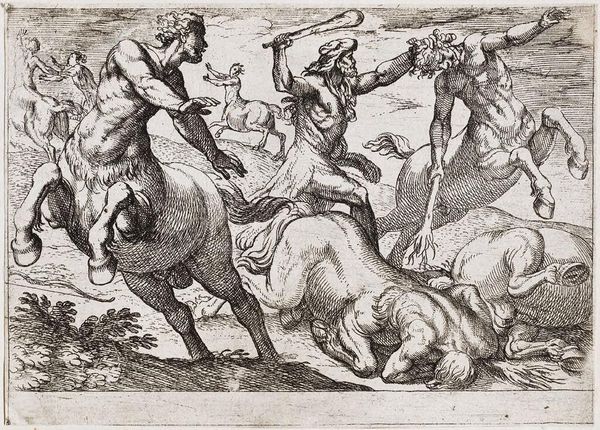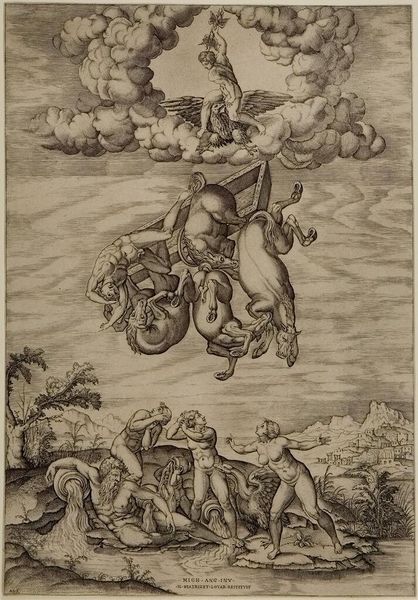
drawing, print, ink, woodcut, engraving
#
drawing
#
allegory
#
animal
# print
#
pen illustration
#
landscape
#
classical-realism
#
fantasy-art
#
figuration
#
form
#
ink line art
#
11_renaissance
#
female-nude
#
ink
#
geometric
#
woodcut
#
line
#
northern-renaissance
#
nude
#
engraving
Copyright: Public domain
Curator: Take a moment to consider "Abduction of Proserpine on a Unicorn," an engraving by Albrecht Dürer, created in 1516. It's fascinating, wouldn't you agree? Editor: Absolutely. My initial thought is raw, untamed energy! There’s a tension between the frenzied figures and the… somewhat serene landscape. It makes me wonder, what kind of a love story has so much unrestrained activity? Curator: The story unfolds as the tale of Pluto, god of the underworld, seizing Proserpine to be his queen. You see, the way Dürer uses line? Notice how it swirls, creating movement and a real sense of drama. Look especially closely at the texture in the hair, both on Proserpine and the unicorn! Editor: I do see that, but the texture has got me wondering... does the rigidity of the engraving process clash with the supposed chaos of the abduction? Isn't the emotional temperature sort of cool despite the high-strangeness of the subject? Curator: That's an interesting point, and the classical training and perspective are hard to miss. While the figures show the muscularity typical of the Renaissance, there's a distinct Northern Renaissance flavor, particularly in the detail of the landscape, with its emphasis on naturalism. Maybe the restraint is precisely the point; to highlight the violence inherent in such a mythical abduction. Editor: Hmm, a forced perspective. Still, it does invite us to think about how control, or the attempt at it, can be layered into moments of sheer, unadulterated panic and violence. What looks contained is, really, exploding. And also how mythical narratives can give artists, then and now, a space to deal with difficult and chaotic experiences in their world. Curator: Indeed. It shows how one can explore psychological states using the precision of classical techniques. Seeing these layers interact offers, at least for me, a window into the ongoing conversation between technique, story, and what it means to translate raw emotion into form. Editor: Right. And now, looking back, I also see it’s kind of a commentary about storytelling itself – mythologies rendered through very specific cultural and historical lenses and how even those, in turn, transform in the viewer's eye over time.
Comments
No comments
Be the first to comment and join the conversation on the ultimate creative platform.
